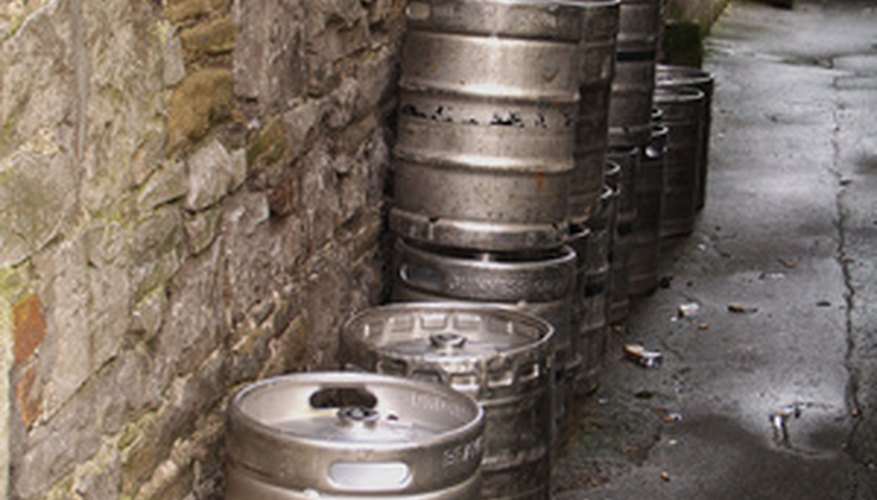A keg is a barrel usually made of aluminium used for the transportation and storage of beer. Issues with the foam content of a mini-keg--a type of keg that holds 5 litres of beer--remains a common problem for the inexperienced restaurateur or novice keg tapper. Such problems include beer served with too much foam; a drink served with not enough foam; or a machine that dispenses foam but no beer.
Too much foam
Sometimes beer served from a mini-keg can contain too much head, or foam. This can happen if the keg did not have ample time to settle before the beer was poured through a pumping device, a process known as tapping. Allowing the mini-keg to sit for an hour helps calm the carbonation. Excess foam can also happen when the keg is not chilled at the standard low temperature (between 2.22 and 3.33 degrees Celsius); if there's a blockage in the beer dispensing line, which is the tube the beer flows through; or if the CO2 tank is not placed in the proper setting of 5.44 to 6.35 Kilogram. The CO2 tank creates internal pressure inside the mini-keg, allowing the beer to pour out.
- Sometimes beer served from a mini-keg can contain too much head, or foam.
- Excess foam can also happen when the keg is not chilled at the standard low temperature (between 2.22 and 3.33 degrees Celsius); if there's a blockage in the beer dispensing line, which is the tube the beer flows through; or if the CO2 tank is not placed in the proper setting of 5.44 to 6.35 Kilogram.
Lack of foam
There are times when a keg will not have an adequate amount of foam. Chilling the keg at a temperature lower than the previously discussed standard can freeze its contents. The frozen contents will dissolve the carbon dioxide and eliminate the carbonation. Stale beer can also account for the lack of foam. When a keg has been sitting for over four months without being poured, the contents of the keg lose the carbonation. Not setting the mini-keg regulator gauge to the correct setting can also account for the lack of foam. The regulator gauge controls the amount of pressure going in and out of the keg.
- There are times when a keg will not have an adequate amount of foam.
- Not setting the mini-keg regulator gauge to the correct setting can also account for the lack of foam.
All foam
Another frustrating problem is when the keg dispenses only foam. This problem sometimes works itself out after a few cupfuls of the foam have been poured out. This glitch can be caused by the fluctuation of the temperature and pressure inside the keg. After significant use, the temperature inside the mini-keg begins to rise. This temperature change can cause carbon dioxide to form at the bottom of the keg. Turning off the carbon dioxide regulator when the keg isn't in use can help alleviate this problem.
- Another frustrating problem is when the keg dispenses only foam.
- This temperature change can cause carbon dioxide to form at the bottom of the keg.
